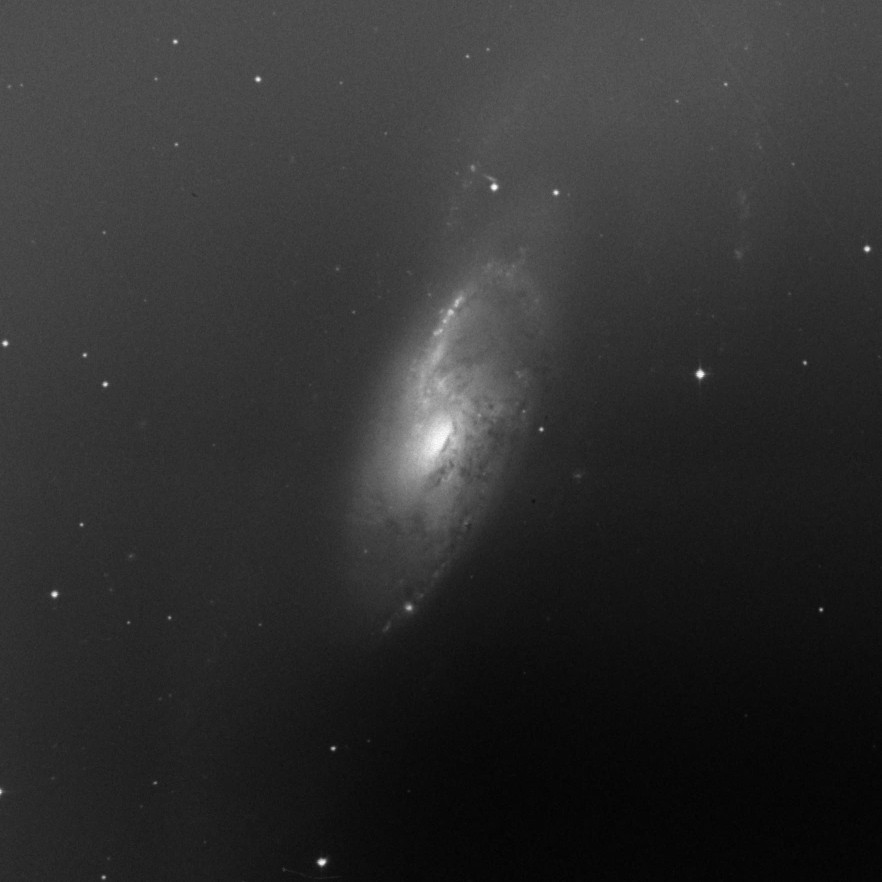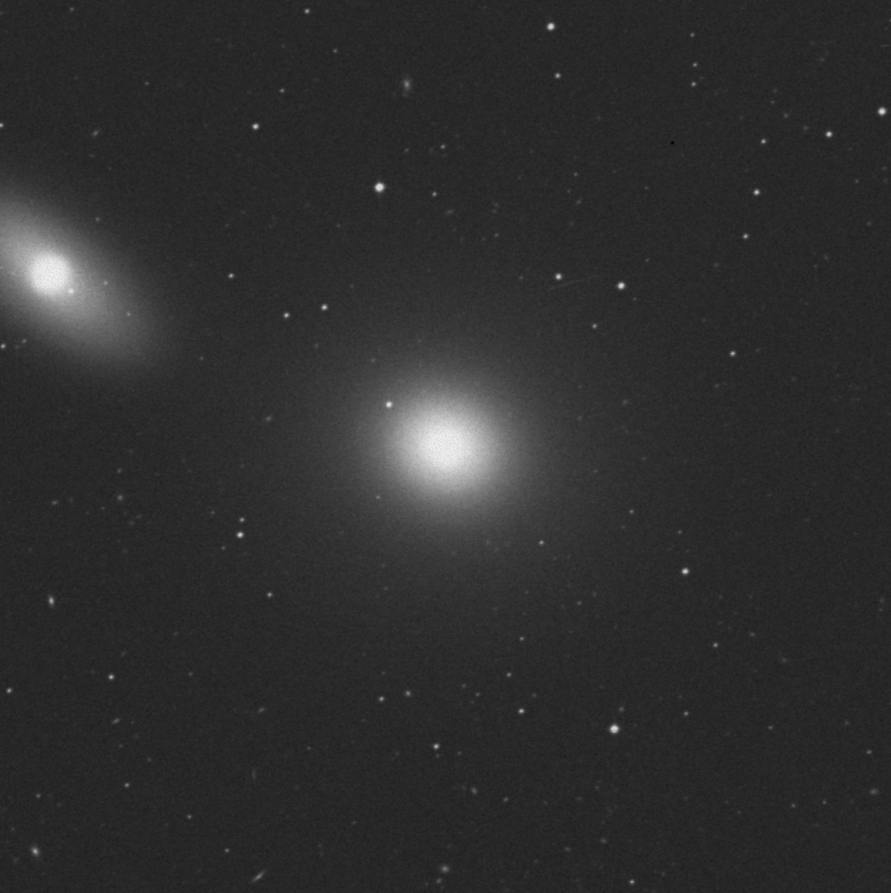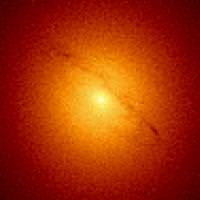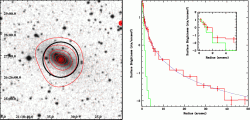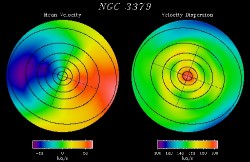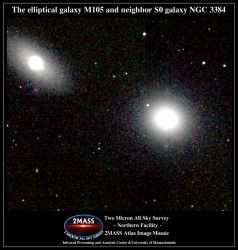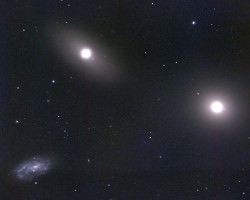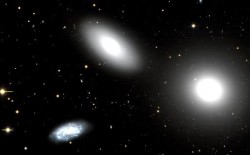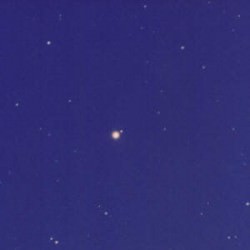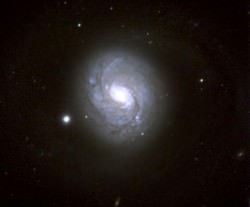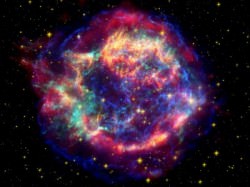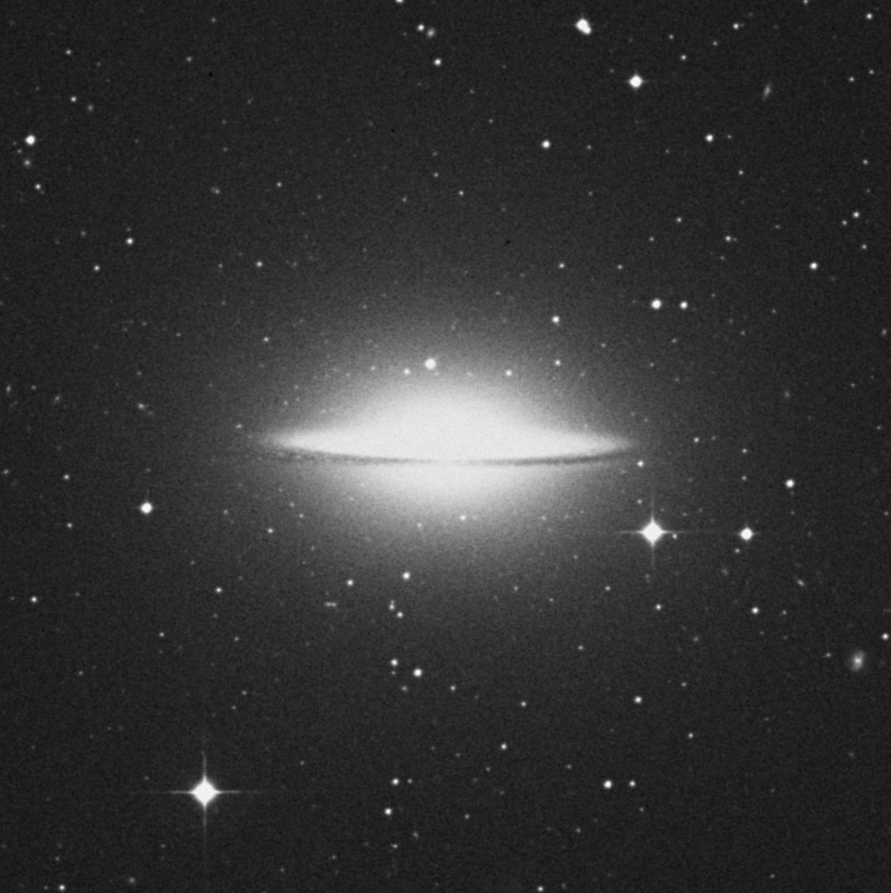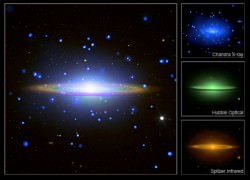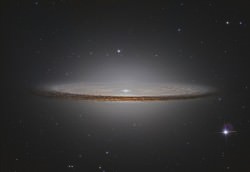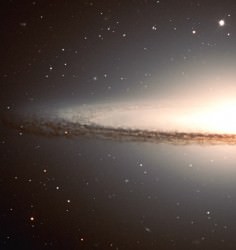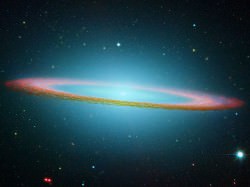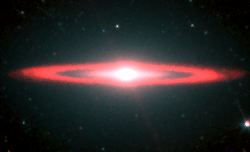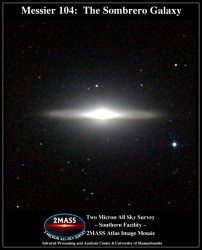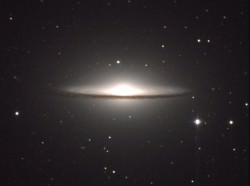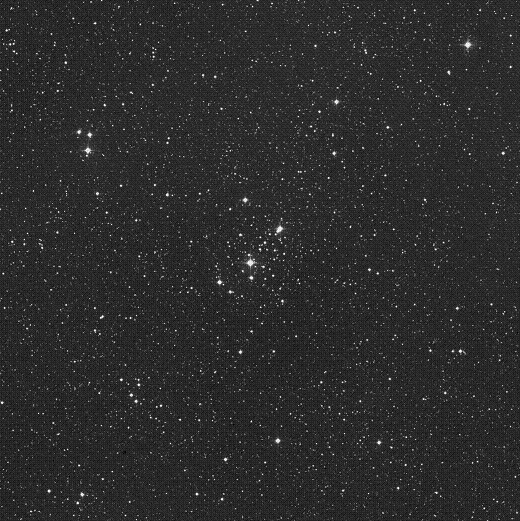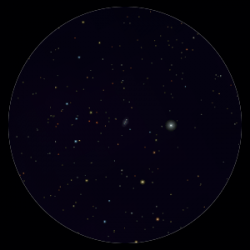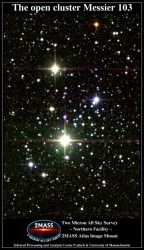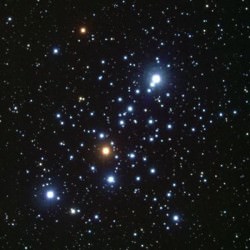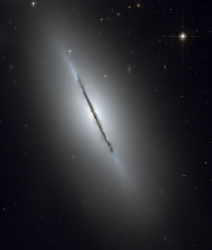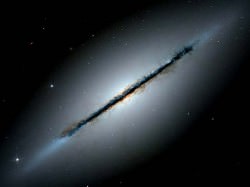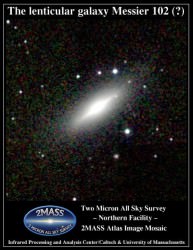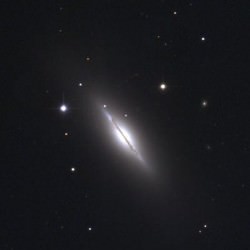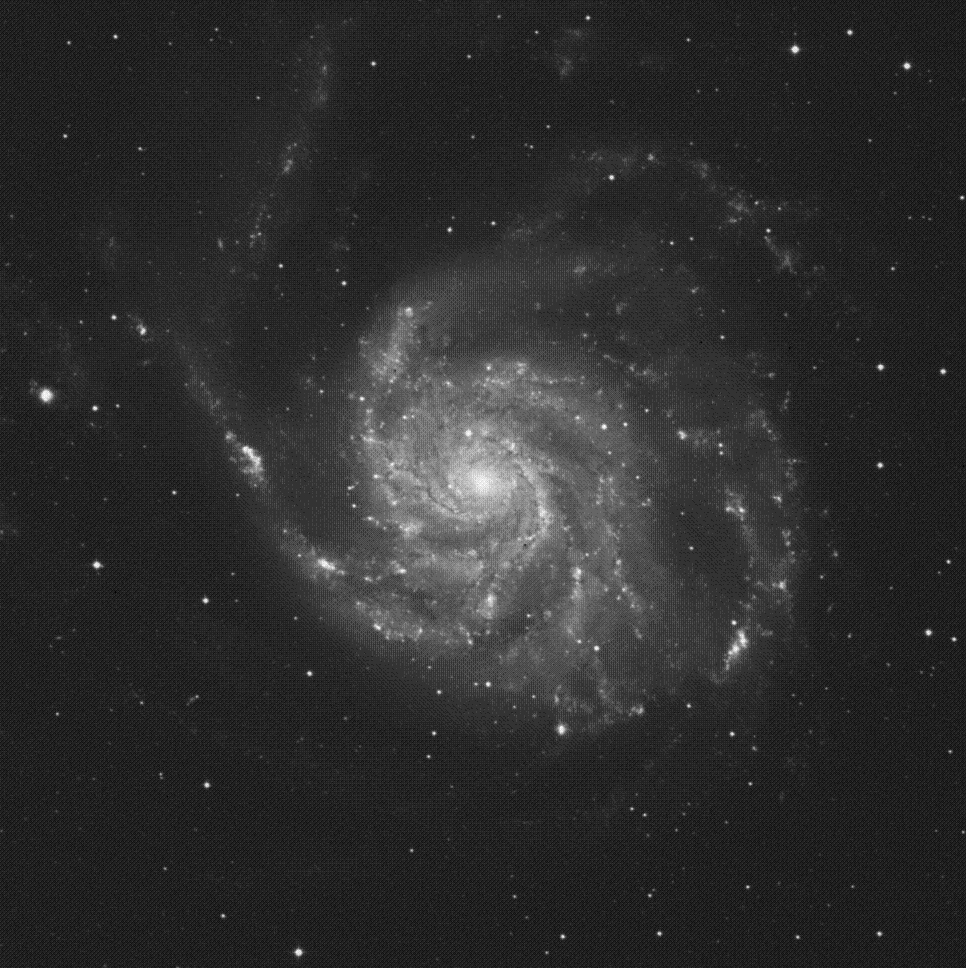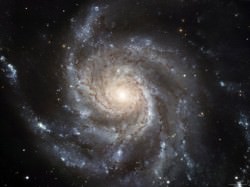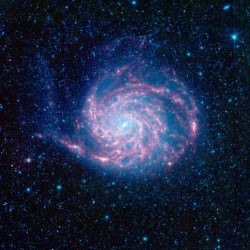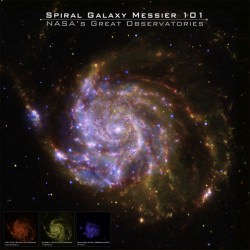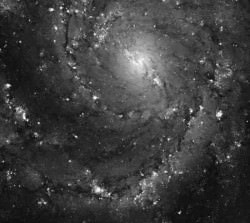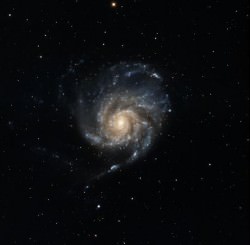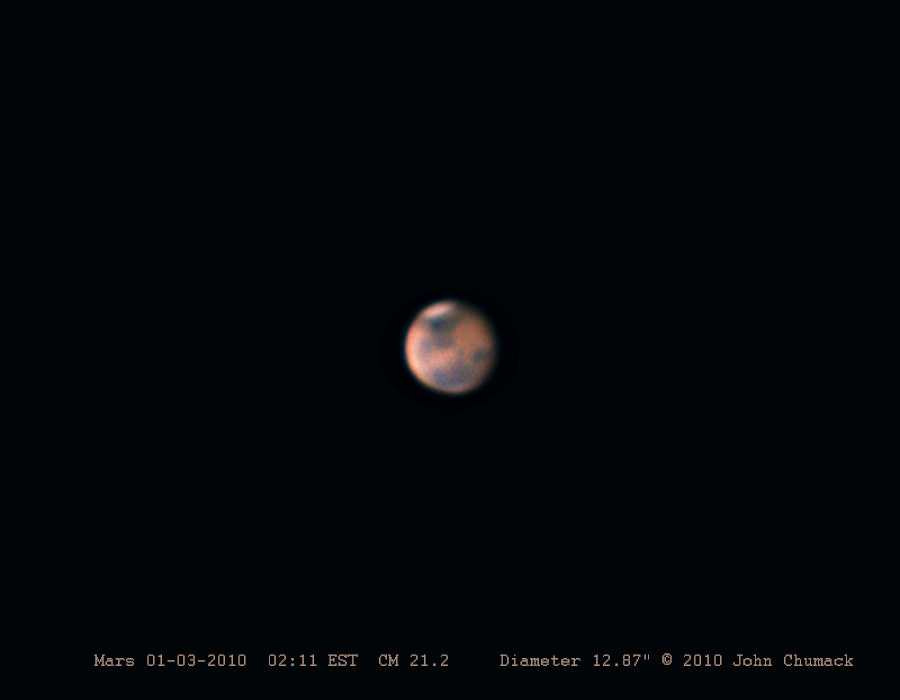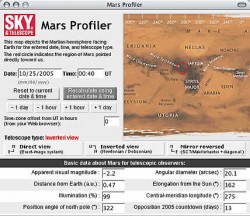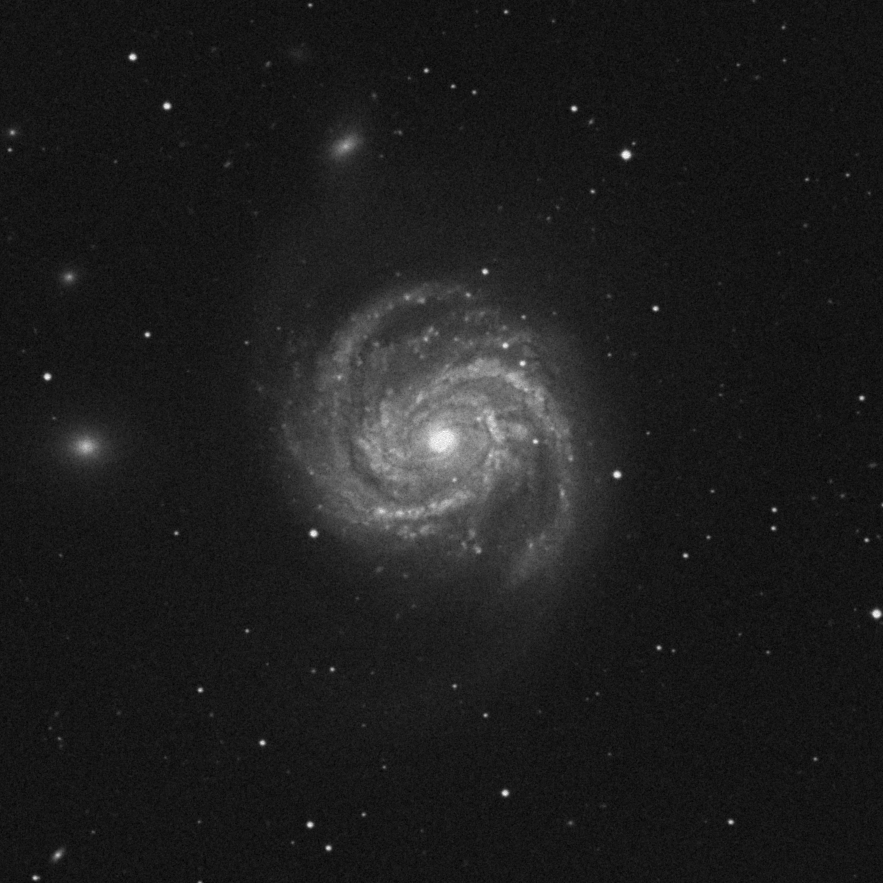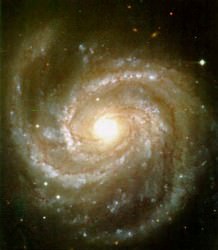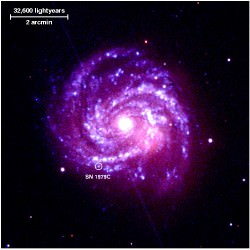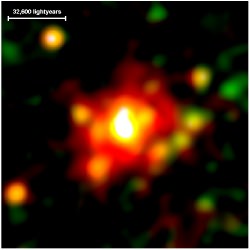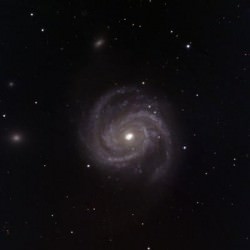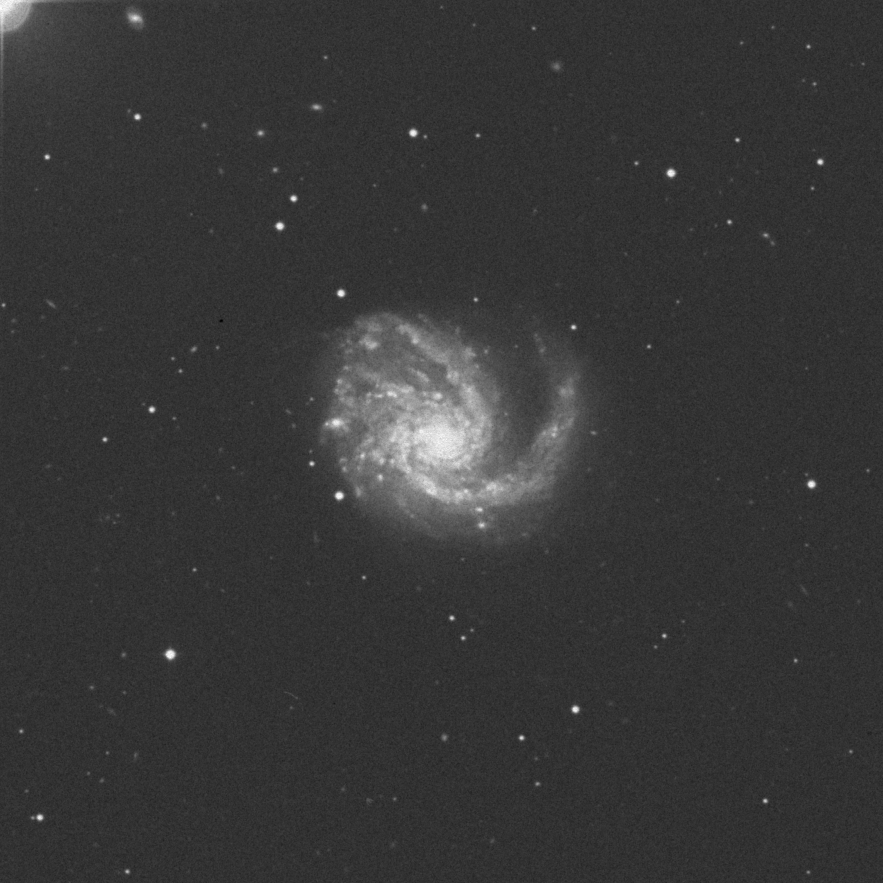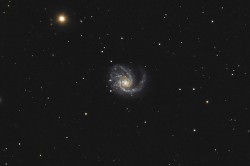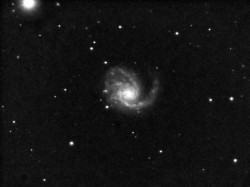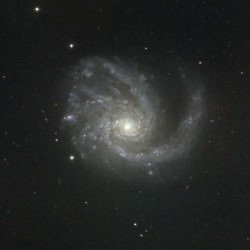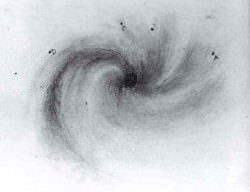Object Name: Messier 106
Alternative Designations: M106, NGC 4258
Object Type: Sbp Spiral Galaxy
Constellation: Canes Venetici
Right Ascension: 12 : 19.0 (h:m)
Declination: +47 : 18 (deg:m)
Distance: 25000 (kly)
Visual Brightness: 8.4 (mag)
Apparent Dimension: 19×8 (arc min)
Locating Messier 106: To begin in roughly the correct area to locate M106, identify the bottom corner star (towards the handle) of the Big Dipper asterism. This is Gamma Ursa Majoris. Now, locate Alpha Canes Venetici – Cor Caroli – about a fistwidth southeast. You will know if you have the correct star because Cor Caroli is an easily split double that will reveal itself to both binoculars, finderscopes and small telescopes. Now start your hunt for M106 directly between Gamma UM and Alpha CVn. At nearly magnitude 8, M106 can be spotted in most binoculars from a dark sky site and is easily seen in all telescopes. Unlike most galaxies, it is bright enough to stand up to moderate light pollution and resolves its structure well in larger instruments.
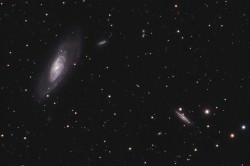 What You Are Looking At: Located roughly 25 million light years away, M106 may be a member of a small galaxy cloud that centers around Ursa Major. It has a great spiral structure, but many hidden facets. “It has been claimed that the megamaser observations of the nucleus of NGC 4258 show that a massive black hole is present in its center. We show that the evidence of ejection of gas, radio plasma, and X-ray emitting QSOs from this nucleus all show that the ejection is coming from the center in a curving flow within a cone with angle ~40 degrees, centered at P.A. 100 degrees.” says E.M. Burbidge abd G. Burbidge of the University of California, San Deigo. “This is close to the direction in which the velocities from the megamaser have been measured, so that the evidence taken as a whole suggests that the masering gas also is being ejected in the same direction at velocities +/- 900 km/sec and not rotating about a massive black hole. Thus it does not provide evidence for a black hole in the center.”
What You Are Looking At: Located roughly 25 million light years away, M106 may be a member of a small galaxy cloud that centers around Ursa Major. It has a great spiral structure, but many hidden facets. “It has been claimed that the megamaser observations of the nucleus of NGC 4258 show that a massive black hole is present in its center. We show that the evidence of ejection of gas, radio plasma, and X-ray emitting QSOs from this nucleus all show that the ejection is coming from the center in a curving flow within a cone with angle ~40 degrees, centered at P.A. 100 degrees.” says E.M. Burbidge abd G. Burbidge of the University of California, San Deigo. “This is close to the direction in which the velocities from the megamaser have been measured, so that the evidence taken as a whole suggests that the masering gas also is being ejected in the same direction at velocities +/- 900 km/sec and not rotating about a massive black hole. Thus it does not provide evidence for a black hole in the center.”
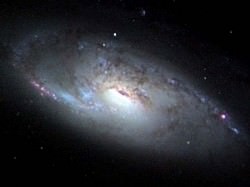 However, not every study agrees with that. “The sub-parsec masing disk recently found to be orbiting a central mass in the Seyfert/LINER galaxy NGC~4258 provides the most compelling evidence to date for the existence of a massive black hole in the nucleus of a galaxy. The disk is oriented nearly edge-on and the X-ray spectrum is heavily absorbed. Therefore, in this galaxy, the optical emission-line spectrum generally exhibited by an active galactic nucleus is perhaps best sought using polarized light: probing for light scattered off material surrounding the central source.” says Belinda J. Wilkes (et al). “New polarimetry of NGC~4258 has uncovered a compact polarized nucleus whose spectrum consists of a faint blue continuum similar to those of unobscured quasars, plus broadened emission lines. The lines are strongly linearly polarized ($5-10$%) at a position angle coincident with the plane of the maser disk. This result provides substantiating evidence for a weakly active central engine in NGC~4258 and for the existence of obscuring, orbiting tori which impart many of the perceived distinctions between various types of active galaxy.”
However, not every study agrees with that. “The sub-parsec masing disk recently found to be orbiting a central mass in the Seyfert/LINER galaxy NGC~4258 provides the most compelling evidence to date for the existence of a massive black hole in the nucleus of a galaxy. The disk is oriented nearly edge-on and the X-ray spectrum is heavily absorbed. Therefore, in this galaxy, the optical emission-line spectrum generally exhibited by an active galactic nucleus is perhaps best sought using polarized light: probing for light scattered off material surrounding the central source.” says Belinda J. Wilkes (et al). “New polarimetry of NGC~4258 has uncovered a compact polarized nucleus whose spectrum consists of a faint blue continuum similar to those of unobscured quasars, plus broadened emission lines. The lines are strongly linearly polarized ($5-10$%) at a position angle coincident with the plane of the maser disk. This result provides substantiating evidence for a weakly active central engine in NGC~4258 and for the existence of obscuring, orbiting tori which impart many of the perceived distinctions between various types of active galaxy.”
 And indeed the central core region – and its accompanying accretion disc continue to fascinate astronmers. “A wealth of new information about the structure of the maser disk in NGC 4258 has been obtained from a series of 18 VLBA observations spanning three years, as well as from 32 additional epochs of spectral monitoring data from 1994 to the present, acquired with the VLA, Effelsberg, and GBT. The warp of the disk has been defined precisely. The thickness of the maser disk has been measured to be 12 micro-arcseconds (FWHM), which is slightly smaller than previously quoted upper limits. Under the assumption that the masers trace the true vertical distribution of material in the disk, from the condition of hydrostatic equilibrium the sound speed is 1.5 km s?1, corresponding to a thermal temperature of 600K.” says James M. Moran (et al).
And indeed the central core region – and its accompanying accretion disc continue to fascinate astronmers. “A wealth of new information about the structure of the maser disk in NGC 4258 has been obtained from a series of 18 VLBA observations spanning three years, as well as from 32 additional epochs of spectral monitoring data from 1994 to the present, acquired with the VLA, Effelsberg, and GBT. The warp of the disk has been defined precisely. The thickness of the maser disk has been measured to be 12 micro-arcseconds (FWHM), which is slightly smaller than previously quoted upper limits. Under the assumption that the masers trace the true vertical distribution of material in the disk, from the condition of hydrostatic equilibrium the sound speed is 1.5 km s?1, corresponding to a thermal temperature of 600K.” says James M. Moran (et al).
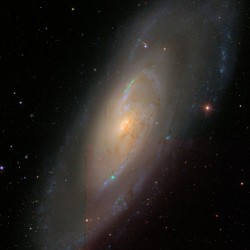 “The accelerations of the high velocity maser components have been accurately measured for many features on both the blue and red side of the spectrum. The azimuthal offsets of these masers from the midline (the line through the disk in the plane of the sky) and derived projected offsets from the midline based on the warp model correspond well with the measured offsets. This result suggests that the masers are well described as discrete clumps of masing gas, which accurately trace the Keplerian motion of the disk. However, we have continued to search for evidence of apparent motions caused by “phase effects.” This work provides the foundation for refining the estimate of the distance to NGC 4258 through measurements of feature acceleration and proper motion. The refined estimate of this distance is expected to be announced in the near future.”
“The accelerations of the high velocity maser components have been accurately measured for many features on both the blue and red side of the spectrum. The azimuthal offsets of these masers from the midline (the line through the disk in the plane of the sky) and derived projected offsets from the midline based on the warp model correspond well with the measured offsets. This result suggests that the masers are well described as discrete clumps of masing gas, which accurately trace the Keplerian motion of the disk. However, we have continued to search for evidence of apparent motions caused by “phase effects.” This work provides the foundation for refining the estimate of the distance to NGC 4258 through measurements of feature acceleration and proper motion. The refined estimate of this distance is expected to be announced in the near future.”
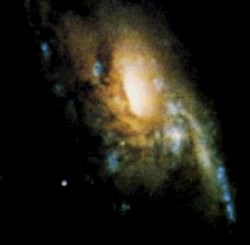 But that’s not all that’s hidden. Try magnetic interaction of jets and molecular clouds in NGC 4258! “NGC 4258 is a well known spiral galaxy with a peculiar large scale jet flow detected in the radio and in H alpha. Due to the special geometry of the galaxy, the jets emerge from the nuclear region through the galactic disk – at least in the inner region. Also the distribution of molecular gas looks different from that in other spiral galaxies: 12CO(1-0) emission has only been detected in the center and along the jets and only up to distances of about 50” (1.8 kpc) from the nucleus. This concentration of CO along the jets is similar to what is expected as fuel for jet-induced star formation in more distant objects. The reason for the CO concentration along the inner jets in NGC 4258 was not understood and is the motivation for the observations presented here.” says M. Krause (et al).
But that’s not all that’s hidden. Try magnetic interaction of jets and molecular clouds in NGC 4258! “NGC 4258 is a well known spiral galaxy with a peculiar large scale jet flow detected in the radio and in H alpha. Due to the special geometry of the galaxy, the jets emerge from the nuclear region through the galactic disk – at least in the inner region. Also the distribution of molecular gas looks different from that in other spiral galaxies: 12CO(1-0) emission has only been detected in the center and along the jets and only up to distances of about 50” (1.8 kpc) from the nucleus. This concentration of CO along the jets is similar to what is expected as fuel for jet-induced star formation in more distant objects. The reason for the CO concentration along the inner jets in NGC 4258 was not understood and is the motivation for the observations presented here.” says M. Krause (et al).
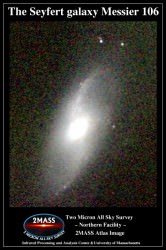 “We detected two parallel CO ridges along a position angle of -25° with a total length of about 80” (2.8 kpc), separated by a CO depleted funnel with a width of about 5” (175 pc). The Halpha emission is more extended and broader than the CO emission with its maximum just in between the two CO ridges. It seems to be mixed in location and in velocity with the CO emission. In CO we see a peculiar velocity distribution in the iso-velocity map and p-v diagrams. We discuss different scenarios for an interpretation and present a model which can explain the observational results consistently. We propose here that the concentration of CO along the ridges is due to interaction of the rotating gas clouds with the jet’s magnetic field by ambipolar diffusion (ion-neutral drift). This magnetic interaction is thought to increase the time the molecular clouds reside near the jet thus leading to the quasi-static CO ridge.”
“We detected two parallel CO ridges along a position angle of -25° with a total length of about 80” (2.8 kpc), separated by a CO depleted funnel with a width of about 5” (175 pc). The Halpha emission is more extended and broader than the CO emission with its maximum just in between the two CO ridges. It seems to be mixed in location and in velocity with the CO emission. In CO we see a peculiar velocity distribution in the iso-velocity map and p-v diagrams. We discuss different scenarios for an interpretation and present a model which can explain the observational results consistently. We propose here that the concentration of CO along the ridges is due to interaction of the rotating gas clouds with the jet’s magnetic field by ambipolar diffusion (ion-neutral drift). This magnetic interaction is thought to increase the time the molecular clouds reside near the jet thus leading to the quasi-static CO ridge.”
History: M106 was discovered by Pierre Mechain in July 1781. In his personal letters to Bernouli he writes: “In July 1781 I found another nebula close to the Great Bear [Ursa Major] near the star No. 3 of the Hunting Dogs [Canes Venatici] and 1 deg more south, I estimate its right ascension 181d 40′ and its northern declination about 49d. I will be going to determine the more accurate position of this one shortly.” It was later independently rediscovered by William Herschel on March 9, 1788 who pens in his notes: “Very brilliant. Bright Nucleus. With faint milky branches north preceding and south following. 15′ long and to the south following running into very faint nebulosity extending a great way. The nucleus is not round.”
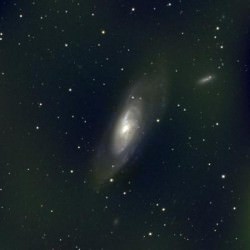 Roughly a half century later it would be observed and cataloged by Admiral Smyth who said: “A large white nebula, closely following the haunches of the Greater Bear, discovered by WH [William Herschel] in 1788, and No. 1175 of his son’s Catalogue. It is a noble-sized oval, trending rather from the vertical in a direction np [north preceding, NW] and sf [south following, SE], with a brightish nucleus in its southern portion; the lateral edges are better defined than the ends. It is preceded by two stars of the 10th magnitude, and followed by two others; and there are also some minute points of light in the field, seen occasionally by glimpses. This object was carefully differentiated with Alkaid; and its place will be indicated by a running diagonal line across the square of Ursa Major, from Alpha through Gamma, and carrying it 7 1/2 deg into the south-east, that is, a little less than the distance between those stars.”
Roughly a half century later it would be observed and cataloged by Admiral Smyth who said: “A large white nebula, closely following the haunches of the Greater Bear, discovered by WH [William Herschel] in 1788, and No. 1175 of his son’s Catalogue. It is a noble-sized oval, trending rather from the vertical in a direction np [north preceding, NW] and sf [south following, SE], with a brightish nucleus in its southern portion; the lateral edges are better defined than the ends. It is preceded by two stars of the 10th magnitude, and followed by two others; and there are also some minute points of light in the field, seen occasionally by glimpses. This object was carefully differentiated with Alkaid; and its place will be indicated by a running diagonal line across the square of Ursa Major, from Alpha through Gamma, and carrying it 7 1/2 deg into the south-east, that is, a little less than the distance between those stars.”
Enjoy your observations!
Top M106 image credit, Palomar Observatory courtesy of Caltech, M106 Hubble Image, M106 SSDS Image, M106 courtesy of Western Washington University, M106 Core courtesy of Lowell Observatory, M106 2MASS Image, M106 image courtesy of Hunter Wilson (Wikipedia) and M106 image courtesy of N.A.Sharp, REU program NOAO/AURA/NSF.

